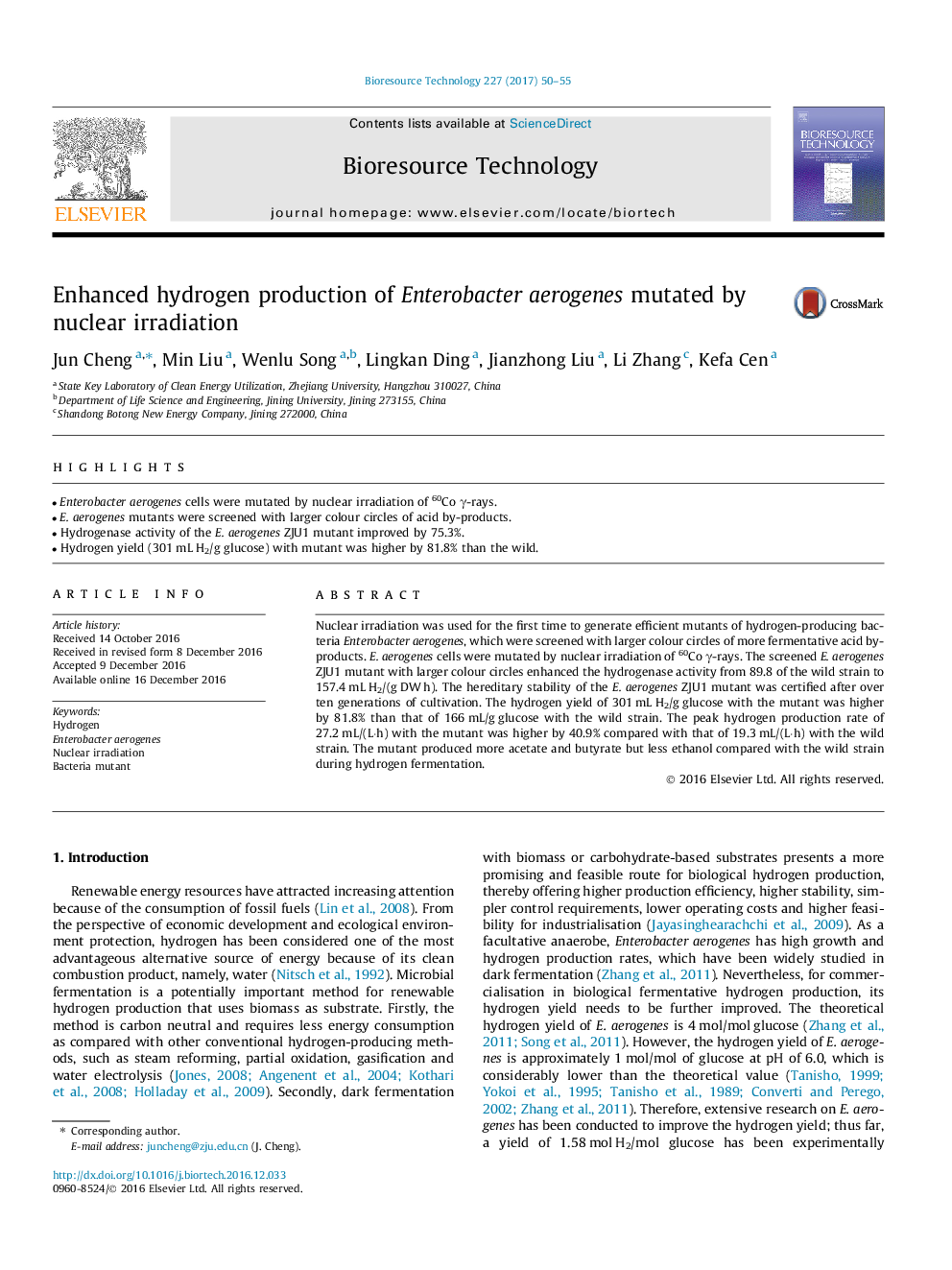| Article ID | Journal | Published Year | Pages | File Type |
|---|---|---|---|---|
| 4997685 | Bioresource Technology | 2017 | 6 Pages |
â¢Enterobacter aerogenes cells were mutated by nuclear irradiation of 60Co γ-rays.â¢E. aerogenes mutants were screened with larger colour circles of acid by-products.â¢Hydrogenase activity of the E. aerogenes ZJU1 mutant improved by 75.3%.â¢Hydrogen yield (301 mL H2/g glucose) with mutant was higher by 81.8% than the wild.
Nuclear irradiation was used for the first time to generate efficient mutants of hydrogen-producing bacteria Enterobacter aerogenes, which were screened with larger colour circles of more fermentative acid by-products. E. aerogenes cells were mutated by nuclear irradiation of 60Co γ-rays. The screened E. aerogenes ZJU1 mutant with larger colour circles enhanced the hydrogenase activity from 89.8 of the wild strain to 157.4 mL H2/(g DW h). The hereditary stability of the E. aerogenes ZJU1 mutant was certified after over ten generations of cultivation. The hydrogen yield of 301 mL H2/g glucose with the mutant was higher by 81.8% than that of 166 mL/g glucose with the wild strain. The peak hydrogen production rate of 27.2 mL/(L·h) with the mutant was higher by 40.9% compared with that of 19.3 mL/(L·h) with the wild strain. The mutant produced more acetate and butyrate but less ethanol compared with the wild strain during hydrogen fermentation.
